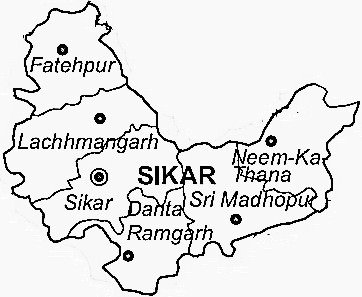
The story of Sikar, a city in the Shekhawati region of Rajasthan, India, is a tale steeped in history, culture, and resilience. Here’s a comprehensive overview of the real story of Sikar:
-
Ancient Roots: Sikar’s history dates back to ancient times, believed to have been part of the Matsya kingdom mentioned in Hindu mythology, particularly in the Mahabharata. Over centuries, it saw the rule of various dynasties including the Rajputs, Mughals, and Marathas, each leaving their mark on its cultural and architectural landscape.
-
Shekhawati Renaissance: Sikar is situated in the heart of Shekhawati, a region known for its ornately decorated havelis (mansions) adorned with fresco paintings. During the 18th and 19th centuries, Shekhawati experienced an economic boom due to its flourishing trade routes. Sikar, along with other towns in Shekhawati, became prosperous centers of commerce, especially among the Marwari merchant community known for their business acumen and philanthropy.
-
Architectural Splendor: The havelis of Sikar and Shekhawati are renowned for their intricate frescoes depicting mythological scenes, social events, and everyday life. These artworks not only showcase the artistic prowess of the time but also serve as a cultural heritage that attracts tourists and historians alike.
-
Role in Independence Movement: Sikar played a significant role in India’s struggle for independence from British rule. The region saw active participation in various movements and protests against colonial policies. Many local leaders and freedom fighters from Sikar contributed to the fight for independence, symbolizing the city’s spirit of resilience and patriotism.
-
Post-Independence Development: After India gained independence in 1947, Sikar continued to develop, primarily relying on agriculture as a key economic activity. The region is known for its production of crops such as bajra (pearl millet), wheat, mustard, and pulses, supported by traditional farming practices adapted to the semi-arid climate.
-
Emergence as an Educational Hub: In recent decades, Sikar has emerged as a notable educational hub in Rajasthan, particularly famous for its coaching institutes preparing students for competitive exams like the IIT-JEE and NEET. This transformation has brought economic prosperity and cultural diversity to the region, attracting students from across India.
-
Cultural Heritage and Festivals: Sikar celebrates its cultural heritage through various festivals such as Teej, Gangaur, and the Sikar Camel Festival, which showcase traditional music, dance, and cuisine. These events not only preserve the city’s rich cultural traditions but also foster a sense of community among its residents.
In essence, the real story of Sikar is one of resilience, cultural vibrancy, and adaptation through centuries of history. From its ancient origins to its role in trade, art, independence, and education, Sikar continues to evolve while cherishing its rich heritage and contributing to the tapestry of Rajasthan’s cultural mosaic.

Leave a Reply